Jinn
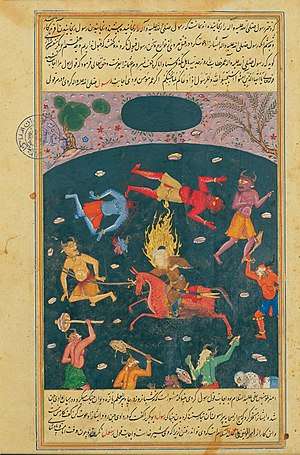
Jinn (Arabic: الجن, al-jinn), also Romanized as djinn or Anglicized as genies (with the more broad meaning of spirits or demons, depending on source)[1][2] are supernatural creatures in early pre-Islamic Arabian and later Islamic mythology and theology.
Etymology
Jinn is an Arabic collective noun deriving from the Semitic root JNN (Arabic: جَنّ / جُنّ, jann), whose primary meaning is "to hide" or "to conceal". Some authors interpret the word to mean, literally, "beings that are concealed from the senses".[3] Cognates include the Arabic majnūn ("possessed", or generally "insane"), jannah ("garden"), and janīn ("embryo").[4] Jinn is properly treated as a plural, with the singular being jinnī.
The origin of the word Jinn remains uncertain.[2] Some scholars relate the Arabic term jinn to the Latin genius, as a result of syncretism during the reign of the Roman empire under Tiberius Augustus,[5] but this derivation is also disputed.[6] Another suggestion holds that jinn may be derived from Aramaic "ginnaya" (Classical Syriac: ܓܢܬܐ) with the meaning of "tutelary deity",[7] or also "garden". Others claim a Persian origin of the word, in the form of the Avestic "Jaini", a wicked (female) spirit. Jaini were among various creatures in the possibly even pre-Zoroastrian mythology of peoples of Iran.[8][9]
The Anglicized form genie is a borrowing of the French génie, from the Latin genius, a guardian spirit of people and places in Roman religion. It first appeared[10] in 18th-century translations of the Thousand and One Nights from the French,[11] where it had been used owing to its rough similarity in sound and sense.
Pre-Islamic Arabia
Jinn were worshipped by many Arabs during the Pre-Islamic period,[12] but, unlike gods, jinn were not regarded as immortal.[12] In ancient Arabia, the term jinn also applied to all kinds of supernatural entities among various religions and cults;[13] thus, Zoroastrian, Christian, and Jewish angels and demons were also called "jinn".[13]
The exact origins of belief in jinn are not entirely clear.[14] Some scholars of the Middle East hold that they originated as malevolent spirits residing in deserts and unclean places, who often took the forms of animals;[14] others hold that they were originally pagan nature deities who gradually became marginalized as other deities took greater importance.[14] According to common Arabian belief, soothsayers , pre Islamic philosophers and poets were inspired by the jinns.[12][14] However, jinns were also feared and thought to be responsible for curing various diseases and mental illnesses.[15][14] Julius Wellhausen observed that such spirits were thought to inhabit desolate, dingy, and dark places and that they were feared.[16] One had to protect oneself from them, but they were not the objects of a true cult.[16]
Islamic theology
In the Islamic sense, jinn is used in two different ways:
- As the opposite of al-Ins (something in shape) referring to any object that cannot be detected by human sensory organs, including Angels, Demons and the interior of human beings. Thus every Demon and every Angel is also a jinn, but not every Jinn is an Angel or a Demon.[17][18][19]
- An invisible entity, created by God out of a "mixture of fire" or "smokeless fire", who roamed the earth before Adam. These entities are believed to resemble humans with regard to the need of eating and drinking, procreation and dying, being subject to judgment they will either be condemned to heaven or hell according to their deeds.[20] But they were much faster and stronger than humans.[21]
In Islamic tradition, Muhammad was sent as a prophet to both human and jinn communities, and that prophets and messengers were sent to both communities.[22][23] Traditionally Surah 72 is held to tell about the revelation to Jinn and several stories mention one of Muhammad's followers accompanied him, witnessing the revelation to the Jinn.[24]
Another Islamic prophet, who is related to interactions with Jinn, is Solomon. In Quran, he is said to be a king in ancient Israel and was gifted by God to talk to animals and Jinn. God granted him authority over the rebellious Jinn or marid, thus Solomon forced them to build the First Temple. Beliefs regarding Solomon and his power over the Jinn were later extended in folklore and folktales.
Related to common traditions, the angels were created on Wednesday, the Jinn on Thursday and humans on Friday, but not the very next day, rather more than 1000 years later.[25] The community of the Jinn race were like these of humans, but then corruption and injustice among them increased and all warnings sent by God were ignored. Consequently, God sent his angels to battle the infidel Jinn. Just a few survived, and were ousted to far islands or to the mountains. With the revelation of Islam, the Jinn were given a new chance to access salvation.[26][27][28]
Development of Islamic Jinn belief
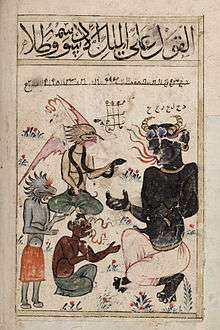
In the beginning of Islam
In early Islamic development, the status of jinn were reduced from that of deities[29] to minor spirits. To assert a strict monotheism and the Islamic concept of Tauhid, all affinities between the jinn and God were denied, thus jinn were placed parallel to humans, also subject to God's judgment and able to attain Paradise or Hell. However, even though their status as tutelary deities was reduced, they were not consequently regarded as demons.[30] In later revelations, the concept of demons and angels distinct from the pagan jinn were made.[31] T. Fahd stated, the jinn were related to the pagan belief, while the demons and angels were borrowed from monotheistic concepts of angels and demons. In later revelations the demons and the jinn seems to be used interchangeably, here placing the jinn with the devil, against the angels and Muhammad.
Jinn belief in the later centuries
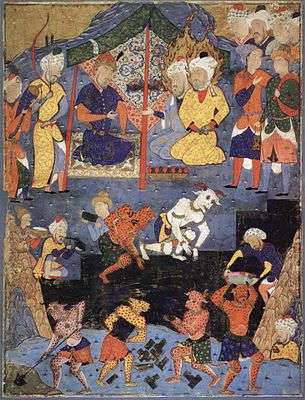
When Islam spread outside of Arabia, belief in the jinn was assimilated with local belief about spirits and deities from Iran, Africa, Turkey and India.[32] Persians, for example, identified the jinn in the Quran with the Daeva from Zoroastrian lore.[33] Developed from various traditions and local folklore, but not mentioned in canonical Islamic scriptures, jinn were thought to be able to possess humans; Morocco especially has many possession traditions, including exorcism rituals.[34] In Sindh the concept of the Jinni was introduced during the Abbasid Era and has become a common part of local folklore, also including stories of both male jinn called "jinn" and female jinn called "Jiniri". Folk stories of female jinn include stories such as the Jejhal Jiniri. Although, due to the cultural influence, the concept of jinn may vary, all share some common features. The jinn are believed to live in societies resembling these of humans, practicing religion (including Islam, Christianity and Judaism), having emotions, needing to eat and drink, and can procreate and raise families. Additionally, they fear iron, generally appear in desolate or abandoned places, and are stronger and faster than humans.[35] Generally, jinn are thought to eat bones and prefer rotten flesh over fresh flesh.[36]
The composition and existence of jinn is the subject of various debates during the Middle Ages. According to Ashari, the existence of jinn can not be proven, because arguments concerning the existence of jinn are beyond human comprehension. Adepts of Ashʿari theology explained jinn are invisible to humans, because they lack the appropriate sense organs to envision them.[37] Critics argued, if jinn exist, their bodies must either be ethereal or made of solid material; if they were composed of the former, they would not able to do hard work, like carrying heavy stones. If they were composed of the latter, they would be visible to any human with functional eyes.[38] Critics therefore refused to believe in a literal reading on jinn in Islamic sacred texts, preferring to view them as "unruly men".[39] On the other hand, advocates of belief in jinn assert that God's creation can exceed the human mind; thus, jinn are beyond human understanding. Since they are mentioned in Islamic texts, scholars such as Ibn Taimiyya and Ibn Hazm prohibit the denial of jinn. They also refer to spirits and demons among the Christians, Zoroastrians and Jews to "prove" their existence.[40] Ibn Taymiyya believed the jinn to be generally "ignorant, untruthful, oppressive and treacherous". He held that the jinn account for much of the "magic" that is perceived by humans, cooperating with magicians to lift items in the air, delivering hidden truths to fortune tellers, and mimicking the voices of deceased humans during seances.[41]
Other critics, such as Jahiz and Mas'udi, stated that sightings of jinn are due to psychological causes. According to Mas'udi, the jinn as described by traditional scholars, are not a priori false, but improbable. Jahiz states in his work Kitab al-Hayawan that loneliness induces humans to mind-games and wishful thinking, causing waswās (whisperings in the mind, traditionally thought to be caused by Satan). If he is afraid, he may see things that are not real. These alleged appearances are told to other generations in bedtime stories and poems, and with children of the next generation growing up with such stories, when they are afraid or lonely, they remember these stories, encouraging their imaginations and causing another alleged sighting of jinn.[42]
Later Sufi traditions related the meaning of jinn back to its origin "something that is concealed from sights", thus they were related to the hidden realm, including angels from the heavenly realm and the jinn from a sublunary realm. Ibn Arabi stated: "Only this much is different: The spirits of the jinn are lower spirits, while the spirits of angels are heavenly spirits".[43] The jinn share, due to their intermediary abode both angelic and human traits. According to some Sufi teachings, a jinn is like an "empty cup", composed of its own ego and intention, and a reflection of its observer.[44] Because jinn are closer to the material realm, it would be easier for human to contact a jinn, than an angel.[45]
In folk literature
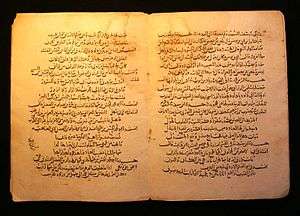
Jinn can be found in the One Thousand and One Nights story of "The Fisherman and the Jinni";[46] more than three different types of jinn are described in the story of Ma‘ruf the Cobbler;[47][48] two jinn help young Aladdin in the story of Aladdin and the Wonderful Lamp;[49] as Ḥasan Badr al-Dīn weeps over the grave of his father until sleep overcomes him, and he is awoken by a large group of sympathetic jinn in the Tale of ‘Alī Nūr al-Dīn and his son Badr ad-Dīn Ḥasan.[50] In some stories, jinn are credited with the ability of instantaneous travel (from China to Morocco in a single instant); in others, they need to fly from one place to another, though quite fast (from Baghdad to Cairo in a few hours).
Modern era
Affirmation on the existence of Jinn as sapient creatures living along with humans is still widespread in the Middle Eastern world and mental illnesses are often attributed to jinn possession.[51]
However some modernist commentators, on the basis of the word's meaning, reinterpretated references to jinn as microorganisms such as bacteria and viruses or undetectable uncivilized persons.[52][53] Others try to reconcile the traditional perspective on jinn, with modern sciences. Fethullah Gülen, leader of Hizmet movement, had put forward the idea, that jinn may be the cause of schizophrenia and cancer and that the Quranic references to jinn on "smokeless fire" could for that matter mean "energy".[54] Others again refuse connections between illness and jinn, but still believe in their existence, due to their occurrences in the Quran.[55]
Modern Salafi tenets of Islam, refuse reinterpretations of jinn and adhere to literalism, arguing the threat of jinn and their ability to possess humans, could be proven by Quran and Sunnah.[56] Jinn are taken as serious danger by adherents of Salafism. Saudi Arabia, following the Wahhabism strant of Salafism, impose death penalty for dealing with jinn to prevent sorcery and witchcraft.[57][58] Further, there is no distinction made between demons and indifferent spirits from other cultures, as Salafi scholars Umar Sulaiman Al-Ashqar stated,[59] that demons are actually simply unbelieving jinn.
Research
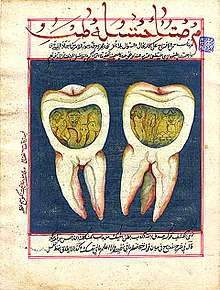
Sleep paralysis is conceptualized as a "Jinn attack" by many sleep paralysis sufferers in Egypt as discovered by Cambridge neuroscientist Baland Jalal.[60] A scientific study found that as many as 48 percent of those who experience sleep paralysis in Egypt believe it to be an assault by the Jinn.[60] Almost all of these sleep paralysis sufferers (95%) would recite verses from the Quran during sleep paralysis to prevent future "Jinn attacks". In addition, some (9%) would increase their daily Islamic prayer (salah) to get rid of these attacks by Jinn.[60] Sleep paralysis is generally associated with great fear in Egypt, especially if believed to be supernatural in origin.[61]
Supernaturality
The supernaturality of Jinn does not mean they are transcendent to nature, but that they appear so in relation to human's perception of nature, due to their invisibility. They are "natural" in the classical philosopical sense by consisting of an element, undergoing change and being bound in time and space.[62] Thus they are not purely spiritual, but also physical in nature, being able to interact in a tactile manner with people and objects, and also subject to bodily desires like eating and sleeping. Unlike the Jinn in Islamic belief and folklore, Jinn in Middle Eastern folktales are often depicted as monstrous or magical creatures, and unlike the former, generally considered to be fictional.[63]
Depictions
Generally jinn lack individuality and are thought to appear in mists or sandstorms.[35] Zubayr ibn al-Awam, who is held to have accompanied Muhammad during his lecture to the jinn, is said to view the jinn as shadowy ghosts with no individual structure.[64] According to a narration Ghazali asked Ṭabasī, famous for jinn-incantations, to receal the jinn to him. Accordingly Tabasi showed him the jinn, seeing them like they were "a shadow on the wall". After Ghazali requested to speak to them, Ṭabasī stated, that for now he could not see more.[65] Although the lack of individuality is a common characteristic for jinn, they may gain individuality by materializing in different forms like Sakhr.[66] They can shape into both animals and human. Black dogs, onagers and serpents are especially thought to be common temporary embodiments of jinn. Except for the 'udhrut from Yemeni folklore, jinn could not transform in wolves, because they were the foes of jinn, disabling the jinn to vanish.[67] Associations between dogs and jinn prevailed in Arabic-literature, but lost its meaning in Persian scriptures.[68] Commonly associated with jinn in humanform are the Si'lah and the Ghoul. However, they stay partly animalic, their bodies are depicted as fashioned out of two or more different species.[69] Therefore, individual jinn are commonly depicted as monstrous and anthropomorphized creatures with body parts from different animals or human with animalic traits.[70] According to Javanese Muslims, the original shape of the jinn is thought of as a gigantic human-like figure.[71]
In witchcraft and magical literature
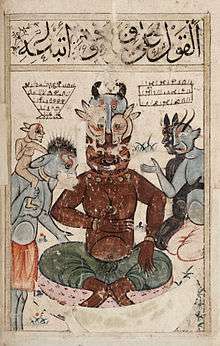
Witchcraft (sihr) is often associated with Jinn and Afarit[72] around the Middle East. Therefore, a sorcerer may summon a Jinn and force him to perform orders. Summoned Jinn may be sent to the chosen victim to cause demonic possession. Such summonings were done by invocation,[73] by aid of talismans or by satisfying the Jinn, thus to make a contract.[74] Jinn are also regarded as assistants of soothsayers. Soothsayers reveal information from the past and present; the Jinn can be a source of this information because their lifespans exceed those of humans.[21]
Ibn al-Nadim, in his Kitāb al-Fihrist, describes a book that lists 70 Jinn led by Fuqtus, including several Jinn appointed over each day of the week.[75][76] Bayard Dodge, who translated al-Fihrist into English, notes that most of these names appear in the Testament of Solomon.[75] A collection of late fourteenth- or early fifteenth-century magico-medical manuscripts from Ocaña, Spain describes a different set of 72 Jinn (termed "Tayaliq") again under Fuqtus (here named "Fayqayțūš" or Fiqitush), blaming them for various ailments.[77][78] According to these manuscripts, each Jinni was brought before King Solomon and ordered to divulge their "corruption" and "residence" while the Jinn King Fiqitush gave Solomon a recipe for curing the ailments associated with each Jinni as they confessed their transgressions.[79]
A disseminated treatise on the occult, written by al-Ṭabasī, called Shāmil, deals with subjugating demons and jinn by incantations, charms and the combination of written and recited formulae and to obtain supernatural powers through their aid. Al-Ṭabasī distinguished between licit and illicit magic, the later founded on disbelief, while the first on purity.[80]
Seven kings of the Jinn are traditionally associated with days of the week.[81]
- Sunday: Al-Mudhib (Abu 'Abdallah Sa'id)
- Monday: Murrah al-Abyad Abu al-Harith (Abu al-Nur)
- Tuesday: Abu Mihriz (or Abu Ya'qub) Al-Ahmar
- Wednesday: Barqan Abu al-'Adja'yb
- Thursday: Shamhurish (al-Tayyar)
- Friday: Abu Hasan Zoba'ah (al-Abyad)
- Saturday: Abu Nuh Maimun
During the Rwandan genocide, both Hutus and Tutsis avoided searching local Rwandan Muslim neighborhoods because they widely believed the myth that local Muslims and mosques were protected by the power of Islamic magic and the efficacious Jinn. In the Rwandan city of Cyangugu, arsonists ran away instead of destroying the mosque because they feared the wrath of the jinn, whom they believed were guarding the mosque.[82]
Comparative mythology
Ancient Mesopotamian religion
Beliefs in entities similar to the jinn are found throughout pre-Islamic Middle Eastern cultures.[14] The ancient Sumerians believed in Pazuzu, a wind demon,[14][83]:147–148 who was shown with "a rather canine face with abnormally bulging eyes, a scaly body, a snake-headed penis, the talons of a bird and usually wings."[83]:147 The ancient Babylonians believed in utukku, a class of demons which were believed to haunt remote wildernesses, graveyards, mountains, and the sea, all locations where jinn were later thought to reside.[14] The Babylonians also believed in the Rabisu, a vampiric demon believed to leap out and attack travelers at unfrequented locations, similar to the post-Islamic ghūl,[14] a specific kind of jinn whose name is etymologically related to that of the Sumerian galla, a class of Underworld demon.[84][85]
Lamashtu, also known as Labartu, was a divine demoness said to devour human infants.[14][83]:115 Lamassu, also known as Shedu, were guardian spirits, sometimes with evil propensities.[14][83]:115–116 The Assyrians believed in the Alû, sometimes described as a wind demon residing in desolate ruins who would sneak into people's houses at night and steal their sleep.[14] In the ancient Syrian city of Palmyra, entities similar to jinn were known as ginnayê,[14] an Aramaic name which may be etymologically derived from the name of the genii from Roman mythology.[14] Like jinn among modern-day Bedouin, ginnayê were thought to resemble humans.[14] They protected caravans, cattle, and villages in the desert[14] and tutelary shrines were kept in their honor.[14] They were frequently invoked in pairs.[14]
Judaism
Shedim, one of several supernatural creatures in early Jewish mythology, resemble the Islamic concept of Jinn. Both are said to be invisible to human eyes but are subject to bodily desires, like procreating and the need to eat, and both may be malevolent or benevolent. Like the Islamic notion of jinn as Pre-Adamites, Jewish lore also regard shedim as Pre-Adamites, replaced by human beings in some legends.[86][87] Narrations regarding Asmodeus, an antagonist in the Solomon legends, appears both in Islamic lore and in the Talmud as the king either of the jinn or the shedim.[63]:120
Buddhism
Similar to the Islamic idea of spiritual entities converting to one's own religion can be found on Buddhism lore. Accordingly, Buddha preached among humans and Devas, spiritual entities who are like humans subject to the cycle of life, that resembles the Islamic notion of Jinn, who are also ontologically placed among humans in regard of their eschatological destiny.[88][89]
Christianity
Van Dyck's Arabic translation of the Old Testament uses the alternative collective plural "jann" (Arab:الجان}; translation:al-jānn) to render the Hebrew word usually translated into English as "familiar spirit" (אוב , Strong #0178) in several places (Leviticus 19:31, 20:6, 1 Samuel 28:3,7,9, 1 Chronicles 10:13).[90]
In the Guanche mythology
In Guanche mythology from Tenerife in the Canary Islands, there existed the belief in beings that were similar to genies,[91] such as the maxios or dioses paredros ("attendant gods", domestic and nature spirits) and tibicenas (evil genies), as well as the demon Guayota (aboriginal god of evil) that, like the Arabic Iblīs, is sometimes identified with a genie.[92] The Guanches were the Berber natives of the Canary Islands before they were colonised and enslaved by the Europeans who claimed the island for themselves.
In popular culture
The jinn frequently occurs as a character or plot element in fiction. Two other classes of jinn, the ifrit and the marid, have been represented in fiction as well.
Genies appear in film in various forms, such as the genie freed by Abu, the eponymous character in the 1940 film Thief of Bagdad.[93]
A Jinni makes a short appearance in the novel American Gods by Neil Gaiman, originally published in 2001. American Gods was also made into a TV series for the Starz television cable television network in 2017. The television adaptation also features a Jinni.
The protagonist of the Bartimaeus Sequence is a jinni, and the books have an established hierarchy that include other types of spirits: imps, foliots, djinn, afrits, and marids (to use the author's own spelling). In this interpretation, jinn and all other spirits are not physical beings, but are instead from another dimension of chaos called "The Other Place". To exist on Earth at all, magicians must summon sprits and force them to take some kind of form, something so alien that it causes all spirits pain. As a result, magicians must put measures in place to force spirits to do what they want in a form of magical slavery.
See also
- Çor
- Daeva
- Daemon (classical mythology)
- Demonology
- Exorcism in Islam
- Fairy
- Genie in popular culture
- Genius loci
- Genius (mythology)
- Ghoul (Jinn who dwell within graveyards)
- Hinn
- Houri
- Iblis
- Ifrit
- Marid
- Nasnas
- Peri
- Qareen
- Qutrub
- Rig-e Jenn
- Shayṭān (Troops of demons headed by Iblis)
- Shedim
- Sila
- Theriocephaly
- Will of the wisp
- Winged genie
- Yazata
- Yōkai
References
- ↑ "jinn – Definition of jinn in English by Oxford Dictionaries". Oxford Dictionaries – English.
- 1 2 Tobias Nünlist Dämonenglaube im Islam Walter de Gruyter GmbH & Co KG, 2015 ISBN 978-3-110-33168-4 p. 22 (German)
- ↑ Edward William Lane. "An Arabic-English Lexicon". Archived from the original on 8 April 2015. . p. 462.
- ↑ Wehr, Hans (1994). Dictionary of Modern Written Arabic (4 ed.). Urbana, Illinois: Spoken Language Services. p. 164. ISBN 978-0-87950-003-0.
- ↑ Amira El-Zein Islam, Arabs, and Intelligent World of the Jinn Syracuse University Press 2009 ISBN 9780815650706 page 38
- ↑ Tobias Nünlist Dämonenglaube im Islam Walter de Gruyter GmbH & Co KG, 2015 ISBN 978-3-110-33168-4 p. 25 (German)
- ↑ Tobias Nünlist Dämonenglaube im Islam Walter de Gruyter GmbH & Co KG, 2015 ISBN 978-3-110-33168-4 p. 24 (German)
- ↑ Tisdall, W. St. Clair. The Original Sources of the Qur'an, Society for Promoting Christian Knowledge, London, 1905
- ↑ The Religion of the Crescent or Islam: Its Strength, Its Weakness, Its Origin, Its Influence, William St. Clair Tisdall, 1895
- ↑ Oxford English Dictionary, 3rd ed. "genie, n." Oxford University Press (Oxford), 2014.
- ↑ Arabian Nights' entertainments, Vol. I, 1706, p. 14 .
- 1 2 3 Amira El-Zein Islam, Arabs, and Intelligent World of the Jinn Syracuse University Press 2009 ISBN 9780815650706 page 34
- 1 2 Amira El-Zein Islam, Arabs, and Intelligent World of the Jinn Syracuse University Press 2009 ISBN 9780815650706 page 34
- 1 2 3 4 5 6 7 8 9 10 11 12 13 14 15 16 17 18 Lebling, Robert (2010). Legends of the Fire Spirits: Jinn and Genies from Arabia to Zanzibar. New York City, New York and London, England: I. B. Tauris. pp. 1–10. ISBN 978-0-85773-063-3.
- ↑ Amira El-Zein Islam, Arabs, and Intelligent World of the Jinn Syracuse University Press 2009 ISBN 9780815650706 page 122
- 1 2 Irving M. Zeitlin (19 March 2007). The Historical Muhammad. Polity. pp. 59–60. ISBN 978-0-7456-3999-4.
- ↑ Scott B. Noegel, Brannon M. Wheeler The A to Z of Prophets in Islam and Judaism Scarecrow Press 2010 ISBN 978-1-461-71895-6 page 170
- ↑ University of Michigan Muhammad Asad: Europe's Gift to Islam, Band 1 Truth Society 2006 ISBN 978-9-693-51852-8 page 387
- ↑ Richard Gauvain Salafi Ritual Purity: In the Presence of God Routledge 2013 ISBN 978-0-710-31356-0 page 302
- ↑ Amira El-Zein Islam, Arabs, and Intelligent World of the Jinn Syracuse University Press 2009 ISBN 9780815650706 page 18
- 1 2 John Andrew Morrow Islamic Images and Ideas: Essays on Sacred Symbolism McFarland, 27 November 2013 ISBN 978-1-476-61288-1 page 73
- ↑ Quran 51:56–56
- ↑ Muḥammad ibn Ayyūb al-Ṭabarī, Tuḥfat al-gharā’ib, I, p. 68; Abū al-Futūḥ Rāzī, Tafsīr-e rawḥ al-jenān va rūḥ al-janān, pp. 193, 341
- ↑ Amira El-Zein Islam, Arabs, and Intelligent World of the Jinn Syracuse University Press 2009 ISBN 9780815650706 page 64
- ↑ Tobias Nünlist Dämonenglaube im Islam Walter de Gruyter GmbH & Co KG, 2015 ISBN 978-3-110-33168-4 p. 43 (German)
- ↑ Patrick Hughes, Thomas Patrick Hughes Dictionary of Islam Asian Educational Services 1995 page 134 ISBN 978-8-120-60672-2
- ↑ Gabriel Said Reynolds The Qur'an and Its Biblical Subtext Routledge 2010 ISBN 978-1-135-15020-4 page 41
- ↑ Tubanur Yesilhark Ozkan A Muslim Response to Evil: Said Nursi on the Theodicy Routledge 2016 ISBN 978-1-317-18754-7 page 141
- ↑ Christopher R. Fee, Jeffrey B. Webb American Myths, Legends, and Tall Tales: An Encyclopedia of American Folklore [3 volumes]: An Encyclopedia of American Folklore (3 Volumes) ABC-CLIO 2016 ISBN 978-1-610-69568-8 page 527
- ↑ Amira El-Zein Islam, Arabs, and Intelligent World of the Jinn Syracuse University Press 2009 ISBN 9780815650706 page 52
- ↑ Jacques Waardenburg Islam: Historical, Social, and Political Perspectives Walter de Gruyter 2008 ISBN 978-3-110-20094-2 page 40
- ↑ Juan Eduardo Campo Encyclopedia of Islam Infobase Publishing 2009 ISBN 978-1-438-12696-8 page 402
- ↑ Patrick Hughes, Thomas Patrick Hughes Dictionary of Islam Asian Educational Services 1995 ISBN 978-8-120-60672-2 page 134
- ↑ Joseph P. Laycock Spirit Possession around the World: Possession, Communion, and Demon Expulsion across Cultures: Possession, Communion, and Demon Expulsion across Cultures ABC-CLIO 2015 ISBN 978-1-610-69590-9 page 243
- 1 2 Hughes, Thomas Patrick. Dictionary of Islam. 1885. "Genii" p.136
- ↑ Abu’l-Fotūḥ, XVII, pp. 280–281
- ↑ Amira El-Zein Islam, Arabs, and Intelligent World of the jinn Syracuse University Press 2009 ISBN 9780815650706 page 22
- ↑ Tobias Nünlist Dämonenglaube im Islam Walter de Gruyter GmbH & Co KG, 2015 ISBN 978-3-110-33168-4 p.33 (German)
- ↑ Hughes, Thomas Patrick. Dictionary of Islam. 1885. "Genii" p.134
- ↑ Tobias Nünlist Dämonenglaube im Islam Walter de Gruyter GmbH & Co KG, 2015 ISBN 978-3-110-33168-4 p.33 (German)
- ↑ Ibn Taymiyyah, al-Furqān bayna awliyā’ al-Raḥmān wa-awliyā’ al-Shayṭān ("Essay on the Jinn"), translated by Abu Ameenah Bilal Phillips
- ↑ Tobias Nünlist Dämonenglaube im Islam Walter de Gruyter GmbH & Co KG, 2015 ISBN 978-3-110-33168-4 p.37 (German)
- ↑ "http://www.ibnarabisociety.org/articles/futuhat_ch009.html
- ↑ H.J. Witteveen The Heart of Sufism: Essential Writings of Hazrat Inayat Khan Shambhala Publications 1999 ISBN 978-0-834-82874-2
- ↑ Amira El-Zein Islam, Arabs, and Intelligent World of the Jinn Syracuse University Press 2009 ISBN 9780815650706 page 50
- ↑ The fisherman and the Jinni at About.com Classic Literature
- ↑ Idries Shah – Tales of the Dervishes at ISF website
- ↑ "MA'ARUF THE COBBLER AND HIS WIFE".
- ↑ The Arabian Nights – ALADDIN; OR, THE WONDERFUL LAMP at About.com Classic Literature
- ↑ The Arabian Nights – TALE OF NUR AL-DIN ALI AND HIS SON BADR AL-DIN HASAN at About.com Classic Literature
- ↑ G. Hussein Rassool Islamic Counselling: An Introduction to theory and practice Routledge, 16.07.2015 ISBN 978-1-31744-125-0 p. 58
- ↑ Simon Ross Valentine Islam and the Ahmadiyya Jama'at: History, Belief, Practice Hurst Publishers 2008 ISBN 978-1-850-65916-7 page 143
- ↑ U. A. B. Razia Akter Banu Islam in Bangladesh BRILL 1992 ISBN 978-9-004-09497-0 page 57
- ↑ John Grant Denying Science: Conspiracy Theories, Media Distortions, and the War Against Reality Prometheus Books ISBN 978-1-616-14400-5
- ↑ Alireza Doostdar The Iranian Metaphysicals: Explorations in Science, Islam, and the Uncanny ISBN 978-1-400-88978-5 Princeton University Press 2018 page 54
- ↑ https://islamqa.info/en/1819
- ↑ https://www.amnesty.org/en/latest/news/2015/08/the-death-penalty-in-saudi-arabia-facts-and-figures/
- ↑ https://www.theatlantic.com/international/archive/2013/08/saudi-arabias-war-on-witchcraft/278701/
- ↑ https://islamqa.info/en/20666
- 1 2 3 Jalal, Baland; Simons-Rudolph, Joseph; Jalal, Bamo; Hinton, Devon E. (1 October 2013). "Explanations of sleep paralysis among Egyptian college students and the general population in Egypt and Denmark". Transcultural Psychiatry. 51 (2): 158–175. doi:10.1177/1363461513503378.
- ↑ Jalal, Baland; Hinton, Devon E. (1 September 2013). "Rates and Characteristics of Sleep Paralysis in the General Population of Denmark and Egypt". Culture, Medicine, and Psychiatry. 37 (3): 534–548. doi:10.1007/s11013-013-9327-x. ISSN 0165-005X.
- ↑ Benjamin W. McCraw, Robert Arp Philosophical Approaches to the Devil Routledge 2015 ISBN 9781317392217
- 1 2 Robert Lebling Legends of the Fire Spirits: Jinn and Genies from Arabia to Zanzibar I.B.Tauris 2010 ISBN 978-0-857-73063-3
- ↑ Amira El-Zein Islam, Arabs, and Intelligent World of the Jinn Syracuse University Press 2009 ISBN 9780815650706 page 64
- ↑ Travis Zadeh Commanding Demons and Jinn: The Sorcerer in Early Islamic Thought p.145
- ↑ Tobias Nünlist Dämonenglaube im Islam Walter de Gruyter GmbH & Co KG, 2015 ISBN 978-3-110-33168-4 p. 153 (German)
- ↑ name="ReferenceA">Robert Lebling Legends of the Fire Spirits: Jinn and Genies from Arabia to Zanzibar Legends of the Fire Spirits: Jinn and Genies from Arabia to Zanzibar 2010 ISBN 978-0-857-73063-3 page 98
- ↑ Tobias Nünlist Dämonenglaube im Islam Walter de Gruyter GmbH & Co KG, 2015 ISBN 978-3-110-33168-4 p. 134 (German)
- ↑ Amira El-Zein Islam, Arabs, and Intelligent World of the Jinn Syracuse University Press 2009 ISBN 9780815650706 page 164
- ↑ Tobias Nünlist Dämonenglaube im Islam Walter de Gruyter GmbH & Co KG, 2015 ISBN 978-3-110-33168-4 p. 164 (German)
- ↑ A.G. Muhaimin The Islamic Traditions of Cirebon: Ibadat and Adat Among Javanese Muslims ANU E Press 2006 ISBN 978-1-920-94231-1 page 47
- ↑ Ian Richard Netton Encyclopaedia of Islam Routledge 2013 ISBN 978-1-135-17960-1 page 377
- ↑ name="Robert Lebling">Robert Lebling Legends of the Fire Spirits: Jinn and Genies from Arabia to Zanzibar I.B.Tauris 2010 ISBN 978-0-857-73063-3 page 153
- ↑ Gerda Sengers Women and Demons: Cultic Healing in Islamic Egypt BRILL 2003 ISBN 978-9-004-12771-5 page 31
- 1 2 Bayard Dodge, ed. and trans. The Fihrist of al-Nadim: A Tenth-Century Survey of Muslim Culture. New York: Columbia University Press, 1970. pp. 727–8.
- ↑ Robert Lebling. Legends of the Fire Spirits: Jinn and Genies from Arabia to Zanzibar. I.B. Taurus, 2010. p.38
- ↑ Celia del Moral. Magia y Superstitión en los Manuscritos de Ocaña (Toledo). Siglos XIV-XV. Proceedings of the 20th Congress of the Union Européenne des Arabisants et Islamisants, Part Two; A. Fodor, ed. Budapest, 10–17 September 2000. pp.109–121
- ↑ Joaquina Albarracin Navarro & Juan Martinez Ruiz. Medicina, Farmacopea y Magia en el "Misceláneo de Salomón". Universidad de Granada, 1987. p.38 et passim
- ↑ Shadrach, Nineveh (2007). The Book of Deadly Names. Ishtar Publishing. ISBN 978-0978388300.
- ↑ Travis Zadeh Commanding Demons and Jinn: The Sorcerer in Early Islamic Thought Wiesbaden: Harrassowitz Verlag, 2014 p-143-145
- ↑ Robert Lebling (30 July 2010). Legends of the Fire Spirits: Jinn and Genies from Arabia to Zanzibar. I.B.Tauris. p. 87. ISBN 978-0-85773-063-3.
- ↑ Kubai, Anne (April 2007). "Walking a Tightrope: Christians and Muslims in Post-Genocide Rwanda". Islam and Christian-Muslim Relations. Routledge, part of the Taylor & Francis Group. 18 (2): 219–235. doi:10.1080/09596410701214076.
- 1 2 3 4 Black, Jeremy; Green, Anthony (1992). Gods, Demons and Symbols of Ancient Mesopotamia: An Illustrated Dictionary. The British Museum Press. ISBN 978-0-7141-1705-8.
- ↑ Cramer, Marc (1979). The Devil Within. W.H. Allen. ISBN 978-0-491-02366-5.
- ↑ "Cultural Analysis, Volume 8, 2009: The Mythical Ghoul in Arabic Culture / Ahmed Al-Rawi". Socrates.berkeley.edu. Retrieved 2011-03-23.
- ↑ Carol K. Mack, Dinah Mack A Field Guide to Demons, Vampires, Fallen Angels and Other Subversive Spirits Skyhorse Publishing 2013 ISBN 978-1-628-72150-8
- ↑ "Shedim: Eldritch Beings from Jewish Folklore". 7 March 2014.
- ↑ Amira El-Zein Islam, Arabs, and Intelligent World of the Jinn Syracuse University Press 2009 ISBN 9780815650706 page 165
- ↑ Marie Musæus-Higgins Poya Days Asian Educational Services 1925 ISBN 978-8-120-61321-8 page 14
- ↑ "Arabic Bible – Arabic Bible Outreach Ministry". arabicbible.com.
- ↑ "Los guanches y los perros llegaron juntos a Tenerife". 7 July 2013. (Spanish)
- ↑ Guanche Religion Archived 2 October 2009 at the Wayback Machine. (Spanish)
- ↑ Crowther, Bosley (6 December 1940). "'The Thief of Bagdad,' a Delightful Fairy Tale, at the Music Hall--'Lady With Red Hair,' at the Palace". The New York Times. Retrieved 2 July 2016.
Bibliography
- Al-Ashqar, Dr. Umar Sulaiman (1998). The World of the Jinn and Devils. Boulder, CO: Al-Basheer Company for Publications and Translations.
- Barnhart, Robert K. The Barnhart Concise Dictionary of Etymology. 1995.
- "Genie". The Oxford English Dictionary. Second edition, 1989.
- Abu al-Futūḥ Rāzī, Tafsīr-e rawḥ al-jenān va rūḥ al-janān IX-XVII (pub. so far), Tehran, 1988.
- Moḥammad Ayyūb Ṭabarī, Tuḥfat al-gharā’ib, ed. J. Matīnī, Tehran, 1971.
- A. Aarne and S. Thompson, The Types of the Folktale, 2nd rev. ed., Folklore Fellows Communications 184, Helsinki, 1973.
- Abu’l-Moayyad Balkhī, Ajā’eb al-donyā, ed. L. P. Smynova, Moscow, 1993.
- A. Christensen, Essai sur la Demonologie iranienne, Det. Kgl. Danske Videnskabernes Selskab, Historisk-filologiske Meddelelser, 1941.
- R. Dozy, Supplément aux Dictionnaires arabes, 3rd ed., Leyden, 1967.
- H. El-Shamy, Folk Traditions of the Arab World: A Guide to Motif Classification, 2 vols., Bloomington, 1995.
- Abū Bakr Moṭahhar Jamālī Yazdī, Farrokh-nāma, ed. Ī. Afshār, Tehran, 1967.
- Abū Jaʿfar Moḥammad Kolaynī, Ketāb al-kāfī, ed. A. Ghaffārī, 8 vols., Tehran, 1988.
- Edward William Lane, An Arabic-English Lexicon, Beirut, 1968.
- L. Loeffler, Islam in Practice: Religious Beliefs in a Persian Village, New York, 1988.
- U. Marzolph, Typologie des persischen Volksmärchens, Beirut, 1984. Massé, Croyances.
- M. Mīhandūst, Padīdahā-ye wahmī-e dīrsāl dar janūb-e Khorāsān, Honar o mordom, 1976, pp. 44–51.
- T. Nöldeke "Arabs (Ancient)", in J. Hastings, ed., Encyclopaedia of Religion and Ethics I, Edinburgh, 1913, pp. 659–73.
- S. Thompson, Motif-Index of Folk-Literature, rev. ed., 6 vols., Bloomington, 1955.
- S. Thompson and W. Roberts, Types of Indic Oral Tales, Folklore Fellows Communications 180, Helsinki, 1960.
- Solṭān-Moḥammad ibn Tāj al-Dīn Ḥasan Esterābādī, Toḥfat al-majāles, Tehran.
- Moḥammad b. Maḥmūd Ṭūsī, Ajāyeb al-makhlūqāt va gharā’eb al-mawjūdāt, ed. M. Sotūda, Tehran, 1966.
Further reading
- Crapanzano, V. (1973) The Hamadsha: a study in Moroccan ethnopsychiatry. Berkeley, CA, University of California Press.
- Drijvers, H. J. W. (1976) The Religion of Palmyra. Leiden, Brill.
- El-Zein, Amira (2009) Islam, Arabs, and the intelligent world of the Jinn. Contemporary Issues in the Middle East. Syracuse, NY, Syracuse University Press. ISBN 978-0-8156-3200-9.
- El-Zein, Amira (2006) "Jinn". In: J. F. Meri ed. Medieval Islamic civilization – an encyclopedia. New York and Abingdon, Routledge, pp. 420–421.
- Goodman, L.E. (1978) The case of the animals versus man before the king of the Jinn: A tenth-century ecological fable of the pure brethren of Basra. Library of Classical Arabic Literature, vol. 3. Boston, Twayne.
- Maarouf, M. (2007) Jinn eviction as a discourse of power: a multidisciplinary approach to Moroccan magical beliefs and practices. Leiden, Brill.
- Taneja, Anand V. (2017) Jinnealogy: Time, Islam, and Ecological Thought in the Medieval Ruins of Delhi. Stanford, CA, Stanford University Press. ISBN 978-1503603936
- Zbinden, E. (1953) Die Djinn des Islam und der altorientalische Geisterglaube. Bern, Haupt.
External links
| Wikimedia Commons has media related to Genies. |
| Look up genie in Wiktionary, the free dictionary. |
| Wikisource has the text of the 1905 New International Encyclopedia article Jinn. |